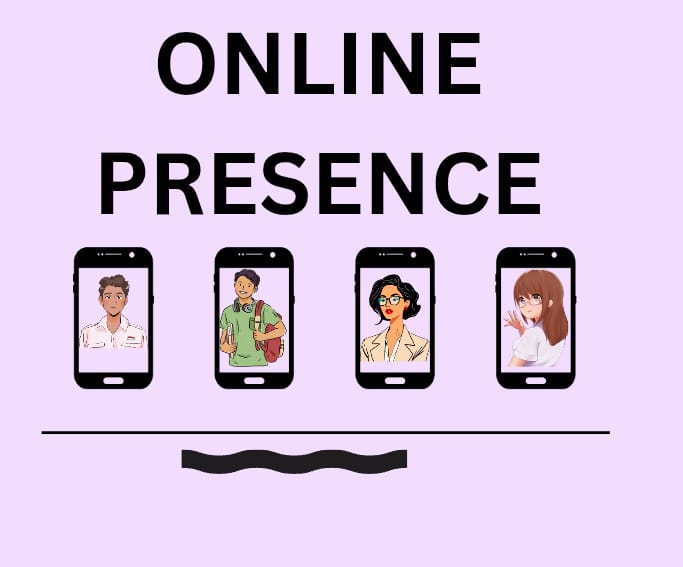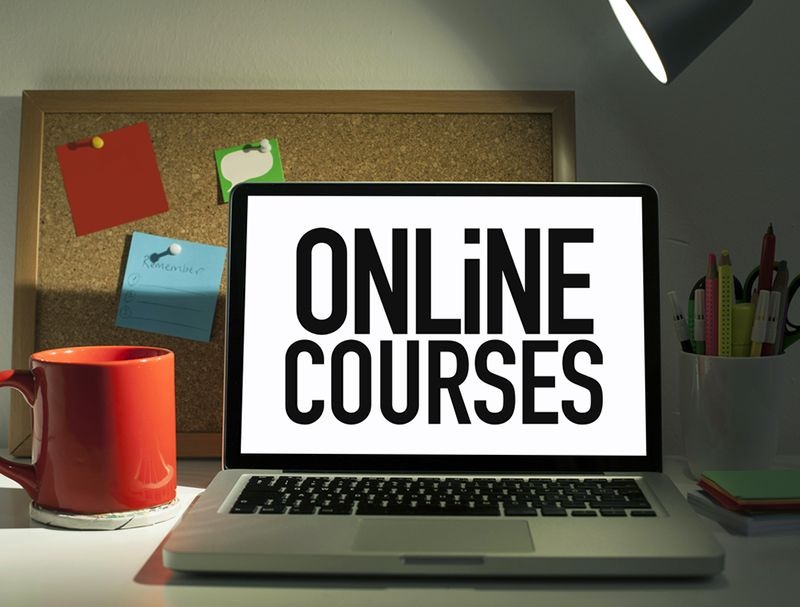Introduction
Sending a resume or simply applying through a platform is not enough in today’s time — everyone should build a strong online professional presence to get noticed quickly.
Building a strong online presence is helpful for everyone, whether you are from any field or whether you are a beginner or a professional. It helps you get job opportunities faster, and recruiters can easily recognize your expertise and contact you.
Some important tips to build a strong online professional presence are included in this article. You can read it and strengthen your online presence step by step.
Why Building a Strong Online Presence is important?
Building a strong online presence is important because it helps you stand out, build credibility, and attract opportunities in today’s digital world. Here are the key reasons:
- It helps you to get job opportunities quickly.
- Recruiters and employers can easily recognize your skills and expertise.
- It benefits you in networking.
- You can become a thought leader in your field Personal branding increases the chance of getting the best opportunities.
- First impressions are made online.
- Increase visibility and recognition.
Tips to Build a Strong Online Professional Presence
1. Build a Personal Brand Online
In today’s digital era, a resume is not enough. Recruiters also check your online footprint through job tools. If you create a strong personal brand in your niche, then you can stand out in front of a recruiter. For example, sharing valuable content regularly on LinkedIn, writing your articles to meet your expectations, and staying active in the professional community authoritatively present you.
It is a trusted signal for recruiters that you are not a job seeker; instead, you are an expert in your field. You can also get passive opportunities from personal branding, which means recruiters will approach you on their own without applying. That’s why keep your online presence clean, professional, and value-driven. This is a long-term investment for your career.
2. Optimizing Your LinkedIn Profile
Your LinkedIn profile is your digital first impression — it’s often the first place recruiters and potential employers check before contacting you. To make it effective, start with a professional profile picture and a clear, keyword-rich headline that reflects your role or target position (e.g., “Aspiring Digital Marketer | Content Creator | SEO Enthusiast”).
Let’s see in detail;
Professional Profile Picture
Your profile photo is the first thing people notice. Make sure it’s:
- High quality (clear, not pixelated)
- Professionally dressed
- Friendly and approachable expression
- Clean background
Tip: Avoid selfies or party photos — go for a simple headshot with good lighting.
Catchy & Clear Headline
Your headline doesn’t have to be just your job title. Use it to show your value, skills, and target role.
Examples:
“Unemployed | Looking for work”
“Content Writer | SEO Specialist | Helping Brands Grow with Engaging Content”
A good headline grabs attention and helps you appear in searches.
Strong About Section (Summary)
This is where you tell your professional story. Use simple language to cover:
- Who you are
- Your top skills and experience
- Your goals or what you’re looking for
- A call to action (e.g., “Open to new opportunities” or “Let’s connect!”)
- Use short paragraphs or bullet points to make it easy to read.
Experience & Roles
Don’t just list job titles — explain what you actually did. For each role:
- Mention your key responsibilities
- Highlight accomplishments
- Add numbers or results when possible
“Increased blog traffic by 60% in 6 months through SEO strategy and content updates.”
This helps recruiters understand your impact.
Skills & Endorsements
Add relevant skills to your profile — LinkedIn allows up to 50, but focus on your top 10–15. Ask colleagues or past clients to endorse your top skills to build credibility.
Pro Tip: Match your skills to the jobs you’re targeting.
Recommendations
Recommendations are like reviews for your work. Politely request a few from:
- Clients or mentors.
- Former managers
- Teammates
3. Building a Strong Online Network
Creating a strong network on LinkedIn is a valuable step in today’s world. But only connecting with people will not help to get a better job, you have to make sure that you are connecting with the right people. Whenever you send a request to anyone, write a short personalized message for sure. After connecting, start commenting on posts, sharing valuable content, and engaging regularly to be visible. Join a LinkedIn group, follow industry leaders, and be part of relevant discussions. The most important thing is to always give valuable thought. Slowly, you will see that your efforts are building a strong and trustworthy connection, which can open doors to job opportunities and long-term growth for you.
Engage with the employer
Candidates usually make one mistake, and that is they apply and wait for the response of the recruiter. But in today’s competitive market, attracting the attention of recruiters is equally important. Job tools also show the activity of candidates to recruiters, like candidates’ engagement on LinkedIn. That’s why if you are genuinely interested in any company, then follow their recruiter comments on the thoughtful post and make your presence visible. It creates direct communication which leaves a positive impression. For example, if you are applying for a marketing role and the company has posted about a new product, then sharing your professional view on that post will show you to be active and enthusiastic in front of recruiters.
4. Using Personal Websites Or Online Portfolios
A personal website or portfolio is your online space to showcase skills, work, and achievements. It builds credibility, gives you full control over your personal brand, and makes it easy for recruiters or clients to find you. Include a professional bio, best work samples, testimonials, resume/CV, and contact details. You can also add a blog to share insights and establish authority. Keep the design clean, mobile-friendly, and easy to navigate. Use high-quality visuals and clear descriptions for each project. A strong portfolio not only highlights your expertise but also leaves a lasting impression that can open doors to new career opportunities.
If you want to learn in detail about LinkedIn—such as how to build a strong LinkedIn profile, what type of format and content works best, how to network on the platform, and why networking is important—then you can read these two articles. These articles are among the best for understanding how to effectively leverage LinkedIn and master networking strategies.
5. Creating Valuable Online Content
Content creation and thought leadership are the best combination. When you openly share your experience, knowledge, and ideas, you build authority in your field. From this, people not only see you as a professional but they start to see you as an expert.
Sharing insights, blogs, or videos to build personal brand
You can write blogs on your related industry field. You can create LinkedIn posts, and you can also create short videos. Sharing insights means sharing your perspective. Example – five tips for better management or how to improve customer engagement.
Speaking at events or webinars for personal brand
Becoming a speaker at offline events, conferences, or online webinars greatly boosts your credibility. You share your expertise, get a direct connection with the audience, and also have opportunities to network. This can make you a go-to person when people seek advice on your topic.
Pro Tip: Add your personal experiences to your content, as real-life examples connect more with people.
6. Continuous Learning and Skill Development
Brand consistency means keeping the image tone, style, and message of your brand the same on every platform. From this, the audience can recognize you easily and will trust your brand.
For an example: if you are using a friendly and casual tone on Instagram, then you have to use the same tone on the website and on LinkedIn as well. Logo, colors, and messaging should be aligned. If you use a different look and tone on every platform, the audience can get confused and your brand value could be reduced. Consistency makes your brand identity strong and creates a loyal audience for the long term.
Staying relevant with industry trends
You have to be relevant to industry trends because the market and audience keep changing. If you use outdated ideas and styles, then you will fall behind the competition. To understand, you have to research the market, observe competitors, and take feedback from your audience. But do remember that following every trend blindly is not important; follow only those trends that match your brand values and the interests of your audience. For example, if there is a trend of eco-friendly products and your brand is about the fashion industry, you can start using sustainable materials from this, and you will be seen as modern and relevant.
Conclusion
In this article, we discussed how to build a strong online professional presence by focusing on personal branding, optimizing LinkedIn and other profiles, creating valuable content, engaging with professionals, and maintaining consistency across platforms.
By applying these strategies, you can enhance your visibility, attract better career opportunities, and build a credible image in your industry. This will help you stand out from the competition, connect with the right people, and grow both personally and professionally in the digital world.
You can explore multiple opportunities and insightful blogs about career development with the help of Best Job Tool.







Leave a Reply